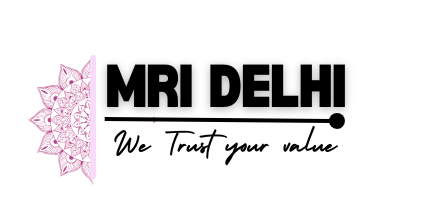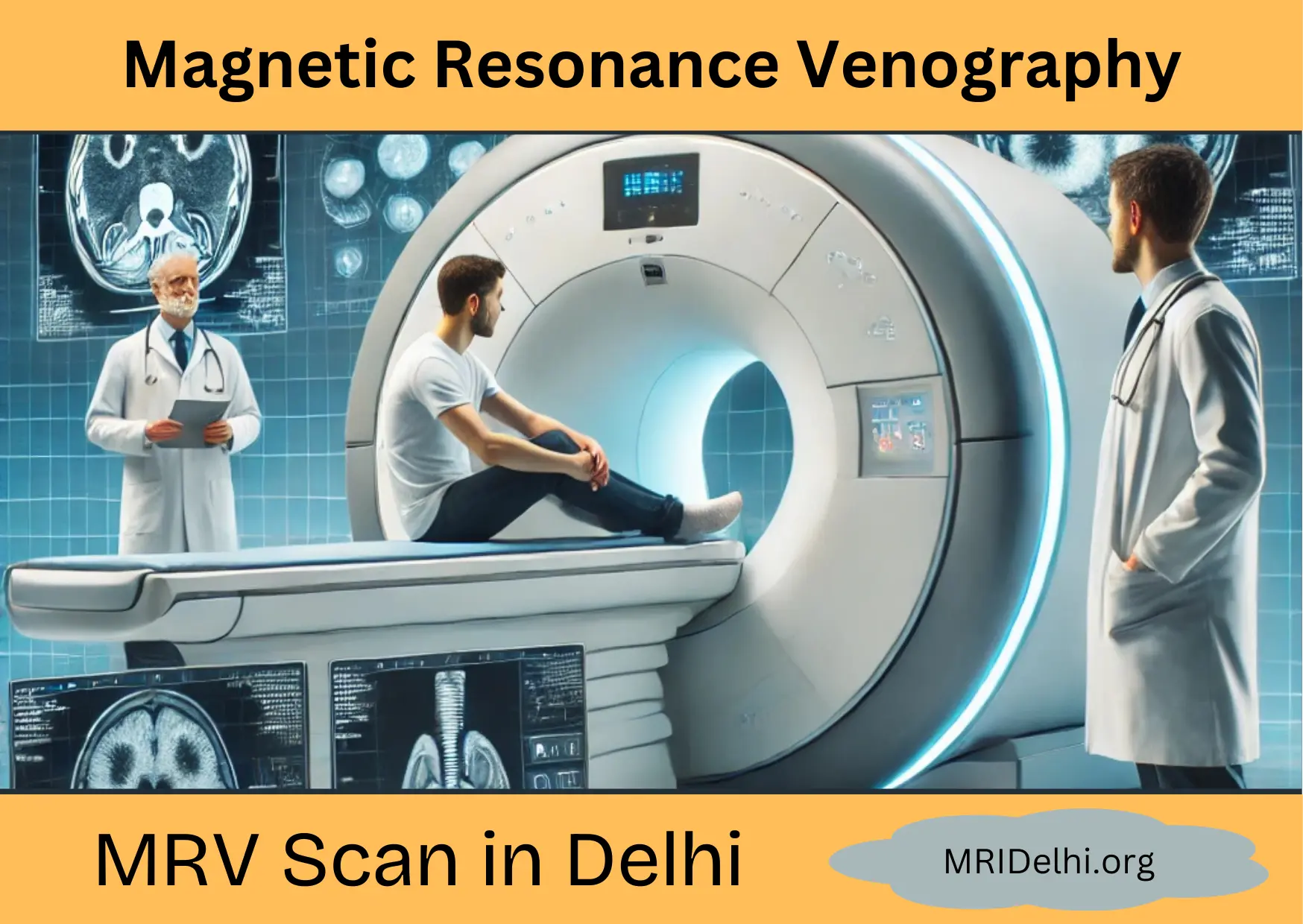Magnetic Resonance Venography (MRV) is a highly specialized imaging technique that provides detailed insights into the venous system of the body. Veins play a crucial role in the circulatory system by carrying deoxygenated blood back to the lungs and heart. This process replenishes the bloodstream with oxygen and nutrients, keeping the body functioning efficiently.
MRV utilizes advanced technology similar to Magnetic Resonance Imaging (MRI). The equipment uses strong magnetic fields and radio waves to create detailed images of veins, helping medical professionals diagnose and treat various venous disorders effectively.
Table of Contents
Understanding the Technology Behind MRV
Magnetic Resonance Venography involves the use of magnetic resonance technology, which interacts with hydrogen atoms in the body. When the MRI machine generates a magnetic field, it aligns these hydrogen atoms. Radiofrequency pulses are then applied, disrupting this alignment. As the atoms return to their original state, they emit signals that are captured by the MRI machine.
These signals are processed by powerful computer systems to produce high-resolution images of the veins. By focusing specifically on the venous system, Magnetic Resonance Venography provides valuable information about blood flow, clots, and structural abnormalities that may not be visible through other imaging techniques.
Key Objectives of Magnetic Resonance Venography
The primary goal of Magnetic Resonance Venography is to assess the health of veins and identify any abnormalities. Below are some of its key uses:
- Detecting Blood Clots: Magnetic Resonance Venography is a reliable method for identifying blood clots (venous thrombosis) that can obstruct blood flow.
- Assessing Blood Flow: It evaluates blood circulation within the veins, detecting irregularities such as restricted or turbulent flow.
- Identifying Structural Abnormalities: Magnetic Resonance Venography can detect congenital malformations or acquired changes in the venous system.
While arterial conditions like strokes and heart attacks are more common and often more severe, venous disorders should not be overlooked. For instance, conditions like cerebral venous thrombosis (CVT), though rare, can lead to serious complications if left untreated.
Common Conditions Diagnosed Using MRV
1. Cerebral Venous Thrombosis (CVT)
This condition occurs when blood clots form in the veins of the brain, obstructing normal blood flow. Symptoms may include severe headaches, vision problems, and neurological deficits.
2. Congenital Venous Malformations
These are structural abnormalities in veins present from birth. They can lead to complications such as swelling, pain, or impaired blood flow.
3. Venous Sinus Thrombosis
This involves blockages in the brain’s venous sinuses, often caused by trauma, infections, or clotting disorders.
4. Coagulopathies
Blood disorders that affect clotting can lead to abnormal clot formation in veins, increasing the risk of conditions like deep vein thrombosis (DVT).
Preparing for an MRV
Medical History and Allergies
Before undergoing an MRV, you must inform your doctor about your medical history, including:
- Allergies to food, medication, or contrast agents.
- Respiratory conditions like asthma.
- Any history of kidney or heart problems.
Special Considerations for Pregnancy and Breastfeeding
- Pregnancy: MRVs are generally avoided during the first trimester due to potential risks to the fetus. Always notify your radiologist if you are pregnant or suspect pregnancy.
- Breastfeeding: If contrast dye is required, consult your doctor about whether breastfeeding can continue immediately after the procedure.
Clothing and Accessories
Patients should avoid wearing or carrying metal objects, as they can interfere with the magnetic field of the MRI machine. Items to avoid include:
- Jewelry, watches, and hairpins.
- Metal zippers, belts, or hooks on clothing.
- Pens, eyeglasses, and pocketknives.
Blood Test for Creatinine Levels
A blood test to measure creatinine levels may be required before the Magnetic Resonance Venography, especially for:
- Individuals aged 70 years or older.
- Patients with diabetes or known kidney disorders.
- Those with a history of tumors affecting the kidney.
Also Read: Elbow mri scan in Delhi
What to Expect During an MRV
The Procedure
An MRV is typically conducted in a specialized imaging center or hospital. The procedure involves:
- Positioning: You will lie down on a table that slides into the MRI scanner.
- Contrast Dye (if required): A contrast agent may be injected into your vein to enhance the clarity of the images.
- Scanning: The MRI machine will create a magnetic field and capture images. You may hear loud thumping or buzzing sounds, which are normal.
- Completion: The procedure usually takes 30 to 60 minutes.
After the Procedure
There is no downtime after an Magnetic Resonance Venography, and most patients can resume normal activities immediately. If contrast dye was used, drinking plenty of water is recommended to flush it out of your system.
Also Read : Knee MRI Scan in Delhi
Cost of Magnetic Resonance Venography
The cost of an Magnetic Resonance Venography varies based on several factors, including:
- Location: Prices are generally higher in metropolitan cities compared to smaller towns.
- Technology: Advanced imaging centers with state-of-the-art equipment may charge more.
- Contrast Use: Procedures involving contrast dye are typically more expensive.
In India, the cost of an Magnetic Resonance Venography ranges from ₹5,000 to ₹25,000. Always confirm the exact cost with your diagnostic center before scheduling the procedure.
Frequently Asked Questions (FAQs)
-
What is the difference between MRI and MRV?
An MRI provides images of all tissues in the body, while an MRV specifically focuses on veins to evaluate blood flow and detect venous abnormalities.
-
How is an MRV performed?
An MRV is performed using an MRI machine. It may involve the use of contrast dye to enhance the images of veins and blood flow.
-
Is MRV a safe procedure?
Yes, MRV is a safe and non-invasive procedure. However, individuals with certain conditions, such as metal implants or severe kidney issues, should consult their doctor beforehand.
-
How long does an MRV take?
The procedure typically takes 30 to 60 minutes, depending on the area being scanned and whether contrast dye is used.
-
Are there any side effects of MRV?
Most patients experience no side effects. Rarely, individuals may have mild reactions to contrast dye, such as nausea or dizziness.
-
Can MRV detect deep vein thrombosis (DVT)?
Yes, MRV is highly effective in detecting DVT, especially in areas that are challenging to assess with other imaging techniques.
-
What is MRV full form
The full form is Magnetic Resonance Venography
Conclusion
Magnetic Resonance Venography is a valuable diagnostic tool for assessing venous health. By providing clear and detailed images of the venous system, MRV helps doctors diagnose conditions like blood clots, venous malformations, and cerebral thrombosis. It is a safe, non-invasive procedure that plays a crucial role in modern medicine.
If you experience symptoms such as swelling, persistent headaches, or unexplained pain, Book a free appointment to consult your doctor about whether an MRV is appropriate. Early diagnosis can make a significant difference in treatment outcomes.

